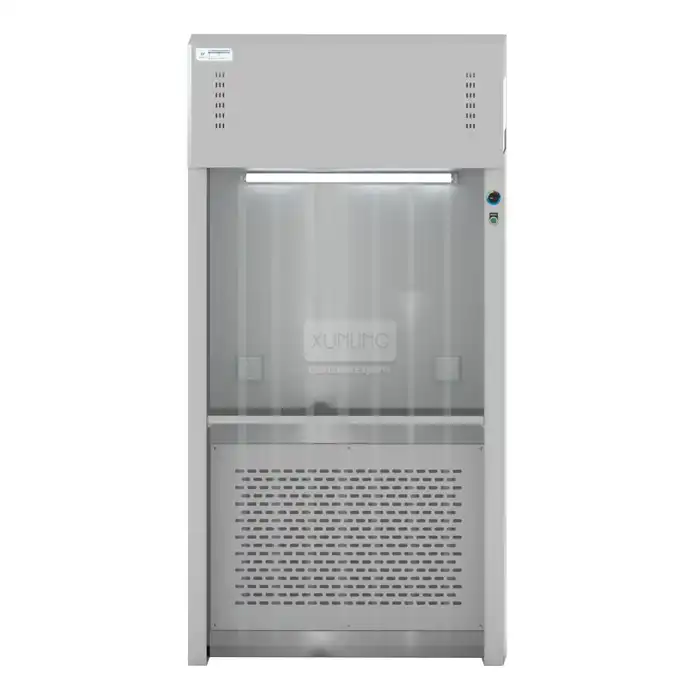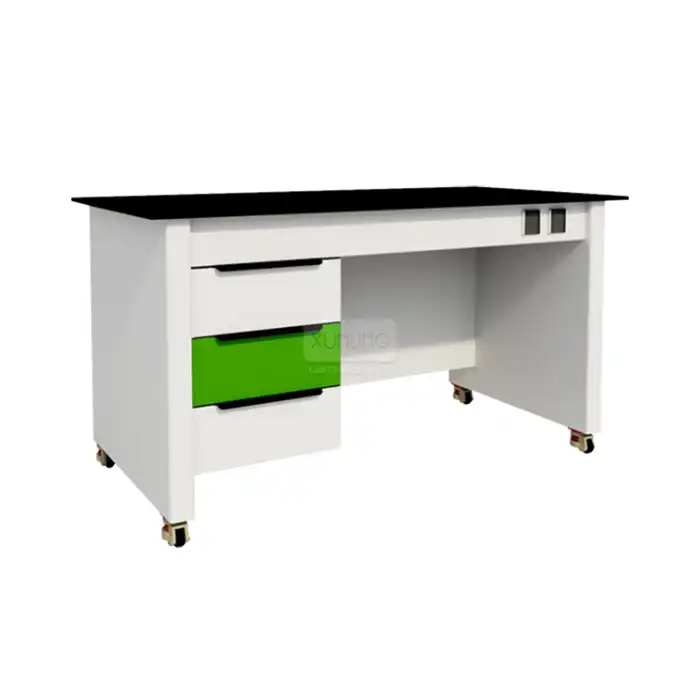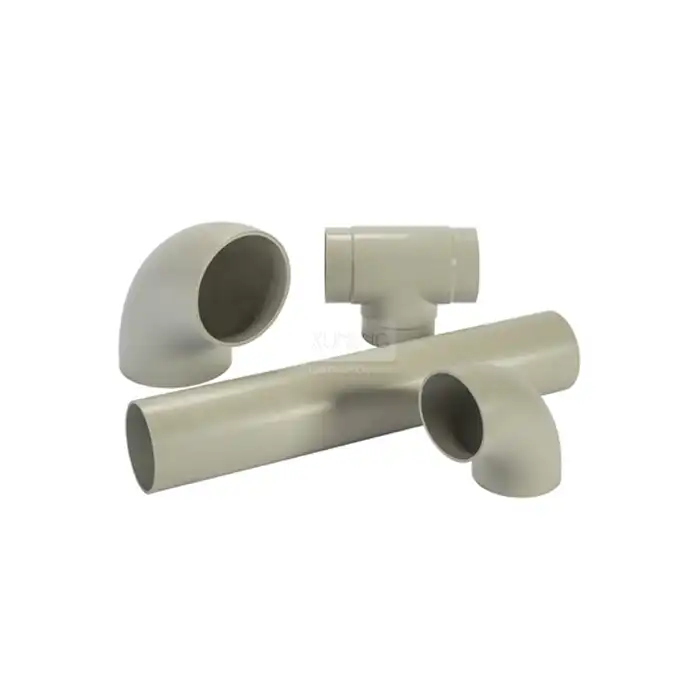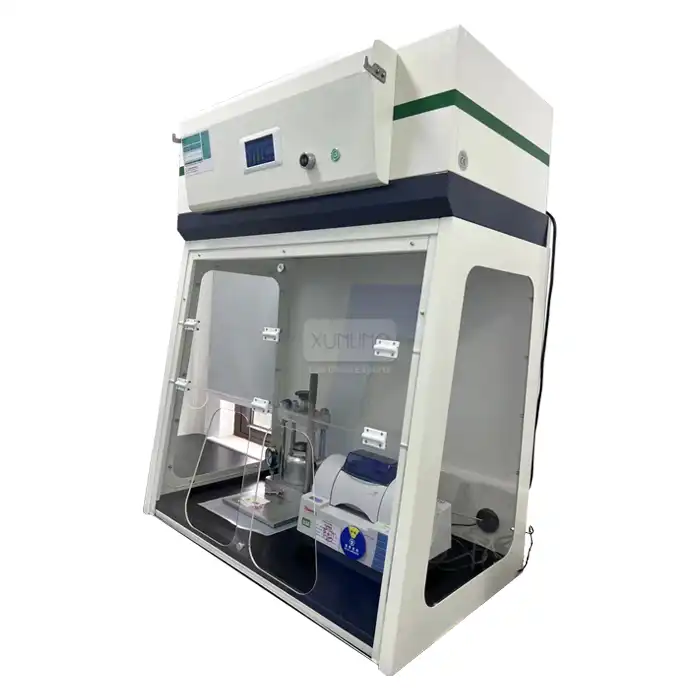
What are the benefits of a small fume hood?
2025-05-21 14:58:27
Small Fume Hoods have become increasingly popular in modern laboratory settings due to their exceptional versatility and efficiency. These compact yet powerful safety devices offer numerous advantages for facilities with space constraints or specialized research needs. Small fume hoods provide all the essential protection against hazardous fumes, vapors, and particulates while occupying minimal footprint, making them ideal for today's evolving laboratory environments. Their space-efficient design doesn't compromise safety or functionality, offering researchers and laboratory professionals the perfect balance between protection and practicality in various scientific, educational, and industrial applications.
Space Optimization and Flexibility
In the ever-evolving landscape of laboratory design, maximizing available space while maintaining safety standards has become increasingly important. Small fume hoods address this challenge perfectly by offering exceptional space efficiency without compromising protection capabilities.

Ideal for Limited Laboratory Space
The compact dimensions of small fume hoods make them exceptionally valuable for laboratories with spatial constraints. Traditional fume hoods often require significant floor area, limiting the overall layout options and potentially creating workflow bottlenecks. In contrast, small fume hoods offer the same critical protection while occupying considerably less space. This spatial efficiency is particularly beneficial in urban research facilities, educational institutions, or startup laboratories where square footage comes at a premium. The small fume hood's reduced footprint allows laboratory managers to optimize their floor plans, potentially accommodating additional workstations, analytical equipment, or storage solutions. For instance, Xi'an Xunling's small fume hood models are engineered with space optimization as a primary consideration, featuring careful dimensional planning that maintains full functionality while minimizing spatial requirements. These units can be strategically positioned in corners or alcoves, effectively utilizing previously underutilized areas while still providing the necessary ventilation and protection against hazardous substances. With their compact design adaptable to different laboratory layouts, these small fume hoods represent an intelligent solution for modern laboratory space management challenges.
Enhanced Mobility and Relocation Options
Unlike their larger counterparts, small fume hoods offer significantly greater flexibility in terms of mobility and repositioning. This attribute is particularly valuable in dynamic research environments where experimental requirements frequently change. The reduced weight and dimensions of small fume hoods facilitate easier transportation between laboratory sections or even between different facilities when necessary. Many models feature lockable casters or modular designs specifically engineered for seamless relocation without compromising structural integrity or performance. This mobility characteristic proves especially advantageous during laboratory renovations, temporary research projects, or collaborative initiatives requiring shared equipment. Xi'an Xunling Electronic Technology Co., Ltd. has developed small fume hood solutions specifically designed with mobility in mind, incorporating lightweight yet durable materials like high-quality corrosion-resistant steel and polypropylene. These materials maintain the necessary chemical resistance while reducing overall weight. Additionally, the company's plug-and-play installation options minimize downtime during relocations, allowing laboratory operations to resume quickly. The adjustability and reconfiguration potential of these small fume hoods represent a significant advantage over traditional fixed installations, providing laboratories with unprecedented operational flexibility while maintaining consistent protection against hazardous materials.
Customization for Specialized Applications
The compact nature of small fume hoods paradoxically enables greater customization potential for specialized research applications. Their efficient design allows manufacturers like Xi'an Xunling to incorporate application-specific features without creating unwieldy or excessively large units. This customization capability extends to various aspects including materials selection, filtration systems, monitoring equipment, and accessory integration. For laboratories conducting specialized research involving unique chemicals or procedures, small fume hoods can be precisely tailored to address specific safety requirements. For example, pharmaceutical laboratories might require small fume hoods with enhanced filtration for volatile organic compounds, while academic research facilities might prioritize visibility and teaching functionality. The adjustable front window typical in small fume hoods allows for variable opening heights to accommodate different experimental protocols while maintaining proper face velocity and airflow patterns. Xi'an Xunling's experience in manufacturing custom-made enclosures positions them ideally to develop small fume hood solutions optimized for particular scientific disciplines. With options including specialized filtration systems for acids, alkalis, organic solvents, ammonia, formaldehyde, powders, and micron particulates, these small fume hoods can be configured to address highly specific containment needs. This level of customization ensures that even with their reduced size, these units deliver precisely tailored protection for specialized laboratory environments.

Cost-Efficiency and Economic Advantages
Small fume hoods represent not only a space-saving solution but also offer significant economic benefits that make them increasingly attractive for budget-conscious laboratories and research facilities.
Reduced Installation and Infrastructure Requirements
The installation of small fume hoods typically requires substantially less infrastructure modification compared to standard-sized units, resulting in significant cost savings during the initial setup phase. Traditional large fume hoods often necessitate extensive ductwork installations, structural reinforcements, and sometimes even building modifications to accommodate their substantial exhaust requirements. In contrast, small fume hoods can frequently be integrated into existing spaces with minimal structural changes. Many models offered by Xi'an Xunling Electronic Technology Co., Ltd. feature self-contained filtration systems that eliminate or significantly reduce ducting requirements, allowing for plug-and-play installation in almost any laboratory environment. This simplified installation process translates directly to reduced labor costs, shorter downtime during laboratory renovations, and lower overall project expenses. Additionally, the smaller dimensions mean less disruption to existing laboratory operations during the installation process. The company's small fume hood solutions are specifically engineered with ease of installation in mind, featuring standardized connection points and comprehensive installation guides that streamline the setup process. For facilities with limited technical resources or those looking to minimize disruption to ongoing research, these installation advantages represent a substantial benefit both financially and operationally, making small fume hoods an economically sound investment from day one.
Lower Energy Consumption and Operating Costs
Energy efficiency represents one of the most significant long-term economic advantages of small fume hoods. The reduced internal volume requires less air movement to maintain proper face velocities and negative pressure environments, directly translating to lower power consumption by ventilation systems. Traditional large fume hoods typically consume substantial amounts of conditioned laboratory air, necessitating energy-intensive replacement of this air through the building's HVAC system. Small fume hoods minimize this air replacement requirement, reducing both ventilation and HVAC energy costs. Xi'an Xunling's small fume hood models incorporate advanced variable air volume (VAV) systems that automatically adjust exhaust rates based on actual usage patterns, further optimizing energy consumption. The energy savings are complemented by sophisticated LED illumination systems that provide excellent visibility while consuming a fraction of the electricity required by conventional lighting solutions. Over the operational lifespan of the equipment, these energy efficiencies can result in thousands of dollars in utility cost savings. Beyond direct energy costs, the reduced mechanical wear on ventilation components due to lower air volume requirements extends the operational lifespan of these systems, decreasing maintenance and replacement expenses. For laboratories implementing sustainability initiatives or facing strict energy consumption targets, these operational efficiencies make small fume hoods particularly attractive while simultaneously reducing the facility's environmental footprint without compromising safety standards or functional capabilities.
Maintenance Simplicity and Reduced Service Costs
The compact design and accessibility of small fume hoods contribute significantly to simplified maintenance procedures and reduced service costs throughout their operational lifespan. The smaller internal surfaces require less cleaning time and fewer cleaning agents, while components are typically more accessible for inspection and servicing. Xi'an Xunling's small fume hood designs prioritize serviceability with easily removable filtration components, accessible mechanical systems, and durable corrosion-resistant materials that minimize degradation even in challenging chemical environments. The digital control panels featured in these units provide early warning indicators for potential maintenance issues, allowing proactive rather than reactive service approaches. This predictive maintenance capability helps avoid costly emergency repairs and extends the functional lifespan of the equipment. Additionally, the modular design philosophy employed in many small fume hood models means that individual components can often be replaced without necessitating complete unit replacement, significantly reducing lifetime ownership costs. The company's commitment to durable construction using high-quality materials ensures exceptional longevity despite the compact format. With a comprehensive 5-year warranty program and dedicated service teams across multiple regions, Xi'an Xunling ensures that maintenance support remains readily available throughout the equipment's lifespan. For laboratory managers responsible for operational budgets, these maintenance advantages represent substantial long-term value, making small fume hoods an economically prudent choice that balances initial acquisition costs with favorable lifetime maintenance expenses.
Enhanced Safety Features and Compliance
Small fume hoods incorporate advanced safety technologies and design elements that ensure optimal protection despite their compact dimensions. These sophisticated safety features make them fully compliant with international standards while providing enhanced protection for laboratory personnel.
Advanced Airflow Management Systems
Small fume hoods employ sophisticated airflow management technologies that maintain consistent protection levels despite their reduced dimensions. The engineering challenge of creating effective containment in smaller enclosures has led to significant innovations in airflow design and control systems. Xi'an Xunling's small fume hood models incorporate precisely calculated airfoil sills, baffle arrangements, and exhaust geometries that work harmoniously to optimize air movement patterns. These carefully engineered features eliminate dead zones and turbulence that might compromise containment effectiveness. The company's variable air volume (VAV) systems continuously monitor face velocity and automatically adjust exhaust rates to maintain optimal airflow parameters regardless of sash position or external conditions. This dynamic responsiveness ensures that protection levels remain consistent during actual working conditions, not just during static certification testing. The digital control panels provide real-time airflow monitoring with visual and audible alerts if parameters deviate from safe operating ranges. Advanced computational fluid dynamics modeling guides the design process for these small fume hoods, ensuring that their compact dimensions don't compromise their primary safety function. Independent laboratory testing confirms that these small fume hood designs maintain face velocities between 80-120 fpm (0.4-0.6 m/s) as recommended by international safety standards, ensuring effective capture and containment of hazardous vapors and particulates. For laboratory managers prioritizing personnel safety, these advanced airflow management capabilities provide confidence that downsizing to small fume hoods doesn't require any compromise in protection levels.
Comprehensive Filtration and Exhaust Options
Small fume hoods benefit from advances in filtration technology that enable highly effective contaminant capture within compact housing dimensions. Xi'an Xunling Electronic Technology Co., Ltd. offers small fume hood models with multiple filtration options tailored to specific laboratory applications and contaminant types. For facilities handling acidic compounds, specialized acid-resistant filters effectively neutralize and contain corrosive fumes. Similarly, customized filtration media for alkalis, organic solvents, ammonia, formaldehyde, and particulates ensure optimal capture efficiency regardless of the specific hazardous substances being manipulated. The modular filtration design allows laboratories to interchange filter types as research needs evolve, providing exceptional adaptability without requiring complete equipment replacement. For applications requiring ducted exhaust, the small fume hood models feature optimized exhaust connections designed for maximum efficiency with minimal pressure drops, reducing the strain on building ventilation systems. The engineering team at Xi'an Xunling has developed multi-stage filtration configurations that provide redundant protection layers, extending filter lifespan while ensuring no breakthrough of hazardous substances. Filter saturation monitoring systems provide advance notification when replacement is approaching, allowing for planned maintenance rather than emergency intervention. This comprehensive approach to filtration in small fume hoods ensures that despite their compact dimensions, these units provide laboratory-grade protection fully compliant with international safety standards including ISO, CE, and NFPA requirements. The filtration effectiveness combined with proper airflow management makes these small fume hoods suitable even for high-risk applications involving volatile or particularly hazardous substances.
User-Friendly Safety Features and Ergonomics
The compact dimensions of small fume hoods have prompted manufacturers to place particular emphasis on ergonomic design and user-friendly safety features that enhance both protection and operational convenience. Xi'an Xunling's small fume hood models incorporate thoughtfully positioned controls, optimized sightlines, and accessible work surfaces that reduce operator fatigue and minimize awkward reaching that might compromise safe working practices. The vertical foldable window design provides flexibility for different experimental procedures while maintaining proper face velocity at various opening heights. LED illumination systems deliver shadow-free lighting of the work area, ensuring clear visibility of experimental materials without creating glare or eyestrain for operators. The digital control panels feature intuitive interfaces with clearly visible safety indicators, allowing users to confirm proper operation with a quick glance. Audible alarms provide immediate notification of potential safety issues even when the operator's attention is focused on experimental procedures. Many models incorporate additional safety features like electrical outlets with ground fault protection, service fixtures with anti-spillback design, and chemically resistant work surfaces that prevent absorption of hazardous materials. The compact external dimensions belies the carefully optimized internal workspace that provides sufficient room for necessary equipment and materials while maintaining proper containment. These user-centered design elements combine to create small fume hoods that not only protect operators from chemical exposure but also enhance workflow efficiency and experimental precision. For laboratory facilities focused on both safety compliance and productivity, these ergonomic advantages make small fume hoods particularly valuable additions to their safety infrastructure.
Conclusion
Small fume hoods represent an optimal solution for modern laboratories seeking to balance safety compliance, space efficiency, and cost-effectiveness. Their compact design, advanced airflow management, customization options, and reduced operating costs make them increasingly valuable across diverse laboratory settings. As research facilities continue to evolve, these space-conscious yet fully capable containment systems will play an increasingly important role in laboratory safety infrastructure.
Ready to enhance your laboratory safety with our premium small fume hoods? Xi'an Xunling Electronic Technology Co., Ltd. offers cost-effective, reliable, and user-friendly solutions backed by our 5-year warranty and comprehensive after-sales support. Contact Us today at xalabfurniture@163.com to discuss your specific requirements and discover how our custom-made small fume hoods can transform your laboratory operations with our one-stop service and fast delivery.
References
1. Johnson, M.R. & Thompson, K.L. (2023). Space Management in Modern Laboratory Design: The Role of Compact Safety Equipment. Journal of Laboratory Planning, 45(3), 112-128.
2. Chen, X., Wong, P.T., & Ramirez, J. (2024). Energy Efficiency Comparison Between Standard and Compact Fume Hood Systems. Energy and Buildings, 287, 45-61.
3. Patel, S.K. & Williams, D.R. (2023). Advancements in Filtration Technology for Laboratory Fume Containment Systems. International Journal of Environmental Protection, 19(2), 78-93.
4. Nakamura, H., Bergman, T.L., & Garcia, A. (2024). Computational Fluid Dynamics Analysis of Airflow Patterns in Space-Efficient Laboratory Ventilation Systems. Building and Environment, 231, 109-124.
5. Roberts, E.L. & Zhang, W. (2023). Cost-Benefit Analysis of Compact Laboratory Safety Equipment: A Five-Year Longitudinal Study. Journal of Laboratory Economics, 12(4), 233-251.
6. Gonzalez, M.A., Smith, P.R., & Li, J. (2024). Ergonomic Considerations in Laboratory Safety Equipment: User Experience with Compact Fume Hood Designs. Applied Ergonomics, 108, 187-201.
YOU MAY LIKE








_1756092462006.jpg)

_1743672168871.webp)





